Is it dangerous to have a cardiogram?
Hello, I'm Dr. Knowles Blue.
What you call cardiac imaging, which accounts for the largest proportion is the gold standard used to diagnose coronary heart disease - coronary angiography. In recent years, the incidence of coronary heart disease in our country is getting higher and higher, and more and more young, naturally coronary angiography is done more and more, in the provincial and municipal hospitals of cardiovascular internal medicine coronary angiography is a common meal, and even in some county hospitals are also a large number of coronary angiography, as well as coronary interventional therapy. Doctors and patients are accustomed to coronary angiography, in the end, what harm to the body? We will come together to understand how to do coronary angiography? What are the hazards? What are the solutions?
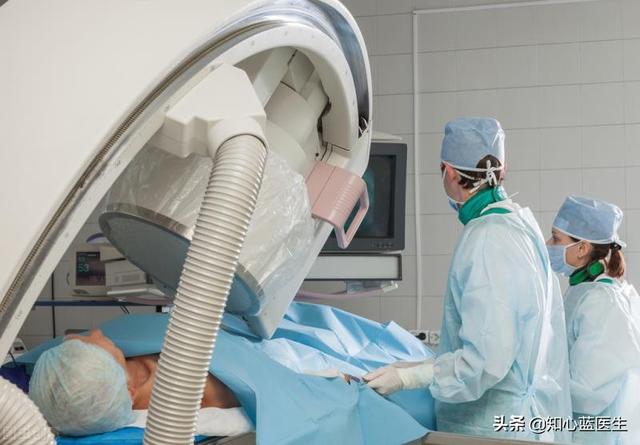
A coronary angiogram is actually a photo and video of the coronary arteries
- Fantastic circulatory system:The arterial blood vessels of the human body are the bridges connecting the heart to various tissues and organs, just like a city's water pipeline system, along any pipe against the flow of water, you can eventually reach the head of the water source, coronary angiography makes use of such a principle, theFrom the artery in our hand (the radial artery, where the pulse is taken) or the artery at the base of the thigh, a tiny catheter is fed to the coronary arteries of the heart against the flow of blood to the heart.
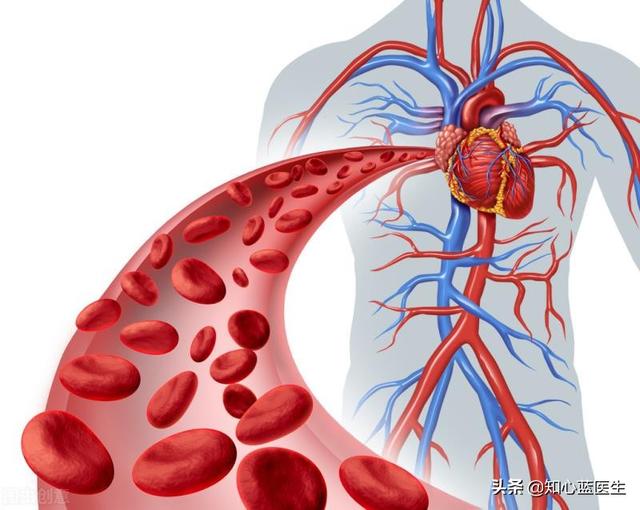
- Coronary arteries "light up" with contrast media:The coronary arteries in the human body are relatively small, the main trunk of the coronary arteries is only five or six millimeters, some of the larger branches are about two or three millimeters, and the rest of the body is made up of even tinier branches; and these blood vessels are connected to the surrounding tissues, and are covered by bones, muscles, and so on in front of them. So when you do a coronary angiogram, you have to inject a contrast agent from inside the catheter that we talked about earlier, so that the contrast agent fills the coronary arteries.The contrast agent is an X-ray impermeable drug that "lights up" the coronary arteries during coronary angiography so that we can clearly see the distribution and size of the coronary arteries and whether there are any stenoses or blockages.
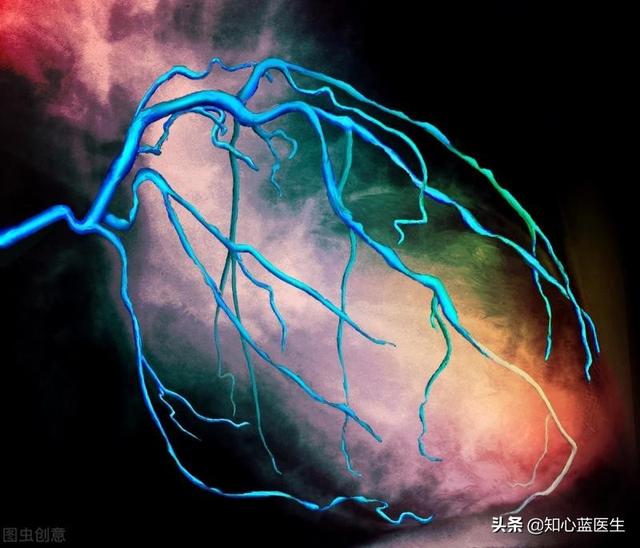
- DSA (Digital Subtraction Angiography) is a camera for blood vessels:The equipment used to take pictures of the coronary arteries mentioned earlier is the DSA, which is in fact also a form of X-ray examination, capable of taking pictures and recording videos of each coronary artery from multiple angles while injecting the contrast medium, which can really be said to be a 360-degree dead angle, and these photos and videos can be stored on a CD-ROM for easy preservation and analysis.It is because coronary angiography is able to have such clear photos and videos that it is the gold standard for diagnosing coronary artery disease.
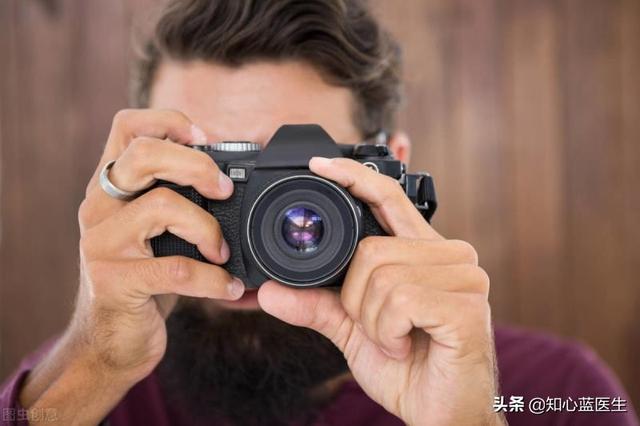
Coronary angiography is the gold standard for diagnosing coronary artery disease and is powerful, so why doesn't everyone have it done? What are the dangers?
In the clinical encounter chest tightness, chest pain symptoms of countless patients, usually only for those with a high clinical suspicion of coronary artery disease for coronary angiography, will not be recommended to all patients, on the one hand, because of chest tightness and chest pain symptoms caused by a variety of diseases, on the other hand, because the coronary angiography is an invasive test, there are some risks.
- Puncture vessel injury:The previously mentioned artery in the hand and the artery at the root of the thigh are the entry vessels for coronary angiography, equivalent to a portal through which all guidewires, catheters, and arterial sheaths enter the vessel, and after the operation is completed, the area is compressed with gauze to stop bleeding.This area has the potential to cause bleeding, hematomas, arteriovenous fistulas, and infections.
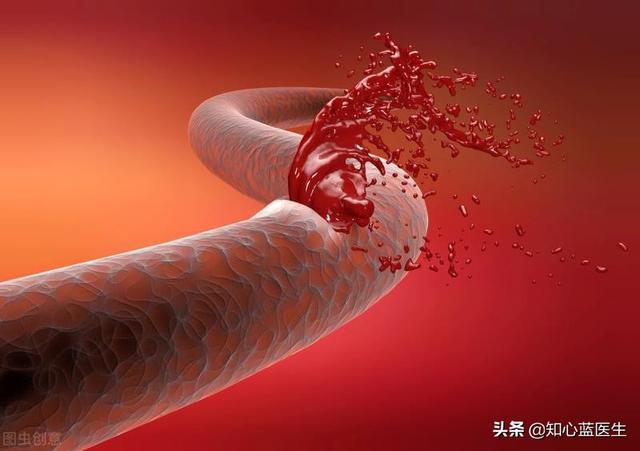
- Coronary artery damage:Coronary angiography involves sending a catheter into the coronary arteries to inject contrast material, which is hard and rough compared to the smooth lining of the coronary arteries., so there is a risk of causing damage to the lining of the coronary arteries and even causing life-threatening arterial entrapment.
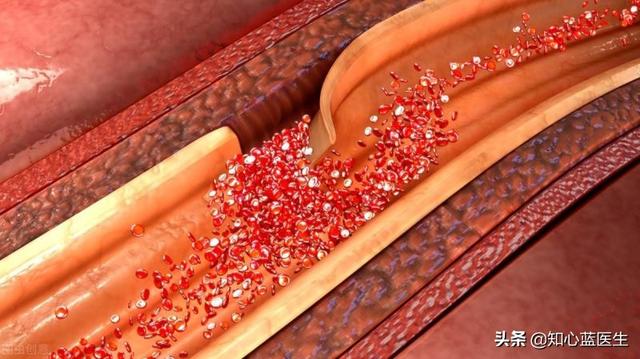
- X-ray radiation:Coronary angiograms are radioactive because they involve taking pictures and recording video from multiple angles and directions, so you receive much more radiation than you would if you had a single chest X-ray or CT scan.Ionizing radiation is predictably associated with with malignant tumors, fetal malformations, and more.
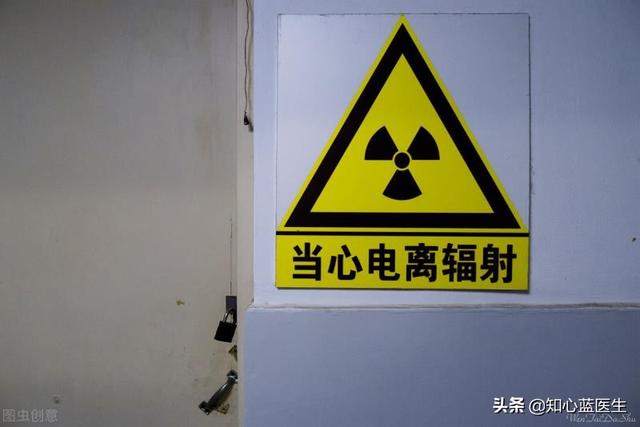
- Contrast agent allergy:Most of the contrast media currently in clinical use contain iodine, which has the potential to cause allergies.Mild allergies may show up as itchy skin, rashes, etc. Severe allergies can lead to anaphylaxis and breathing difficulties.
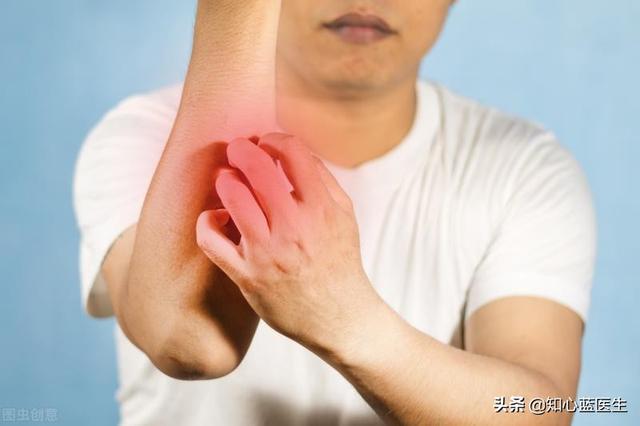
- Contrast nephropathy:The contrast agent injected into the coronary arteries ultimately needs to be excreted in the kidneys, and it is possible for the contrast agent to cause kidney damage, manifested by renal insufficiency.In severe cases, acute renal failure occurs.
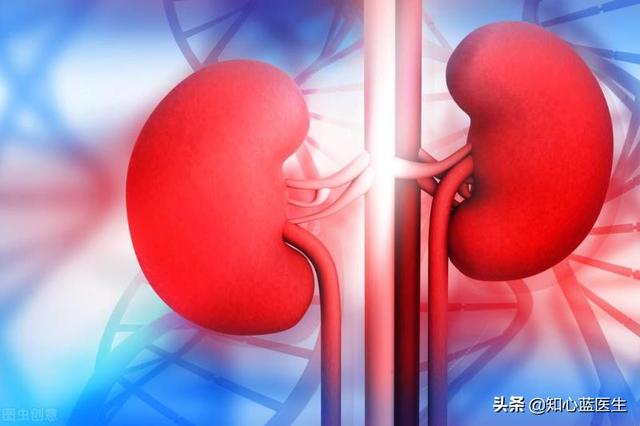
Know Your Enemy, Focus on Prevention to Minimize the Dangers of Coronary Angiography
Although it has been mentioned earlier that coronary angiography has the potential to produce quite a few complications, we should not throw in the towel and choke on it; it should be done when it is needed, and the important thing is how to go about minimizing the harm.
- Selected indications:The most direct way to avoid the harmful effects of coronary angiography on the body is not to perform this test, so this requires the cardiovascular physician to strictly monitor the indications and analyze them based on the history provided by the patient, as well as other tests.Imaging should only be done in people with a high clinical suspicion and should not be a hasty decision.

- Skillful and gentle handling: Coronary angiography is a technical work, practice makes perfect, only when done more, repeated speculation, good at summarizing, only to be able to swim with ease.Have a "lady's hand" that is as gentle as possible to minimize the time of exposure to X-rays, the amount of contrast material used, and the amount of time it takes for the patient to be exposed to X-rays.This reduces vascular damage and the incidence of contrast nephropathy.
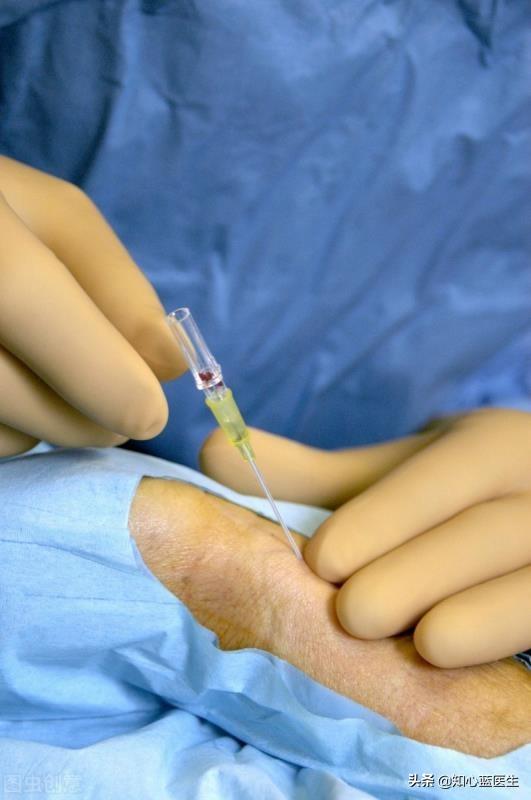
- Drug prevention:For patients who are more likely to have abnormal renal function, such as the elderly, hypertension, diabetes, underlying renal disease, unilateral kidneyContrast nephropathy can be prevented by giving intravenous sodium chloride solution before and after the procedure and by asking the patient to drink plenty of fluids, and of course people with cardiac insufficiency have other rules for fluids and water.For people with allergies, it is necessary to preventively use some anti-allergy medications and have rescue medications on hand.

To summarize, coronary angiography has important diagnostic value for coronary heart disease and is the gold standard. Cardiovascular physicians at all levels of hospitals are able to perform coronary angiography skillfully after some formal training. However, the possibility of complications still exists, such as puncture vessel injury, coronary artery injury, contrast allergy, contrast nephropathy, and X-ray related complications. Good selection of indications, skillful technique, gentle operation, and necessary medication can effectively minimize the occurrence of complications.
Follow Dr. Know Your Heart Blue to learn more about the heart.
Cardiac imaging, generally referred to as coronary angiography, is an invasive test with certain complications and is not a routine test to check the condition of the coronary arteries (coronary arteries).
Some people may have occasional pain in the anterior chest area, but the ECG, ultrasound, 24-hour ambulatory electrocardiogram and so on have not detected any problem, but they are worried that they have a problem with their coronary arteries, should they have a coronary angiogram at this time? The answer is no. We have a simpler and more convenient coronary CT examination, referred to as CTA (CT angiography).
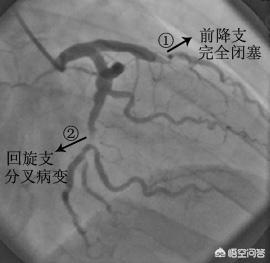
My grandfather was hospitalized for chest tightness, chest pain, and stomach bleeding, and a heart ultrasound also revealed more serious problems with several valves in his heart. The doctor wanted to see if there was a problem with my grandfather's coronary artery, and there were two ways to do this: a coronary angiogram; and a coronary CT.
Coronary angiography is the gold standard for checking the coronary arteries.If the doctor is considering examination and treatment together, a femoral artery puncture for coronary angiography is usually chosen. If the examination is the main focus only, radial artery puncture for angiography is usually chosen.
Femoral artery puncture angiogram requires 24 hours of bed restThe long period of time in which you can't bend and move the puncture leg causes greater discomfort for the patient and makes it more difficult for family members to care for patients who are not cooperating well.
Radial artery puncture angiography is much simpler to care for, essentially no more difficult for the family, and more comfortable for the patient.
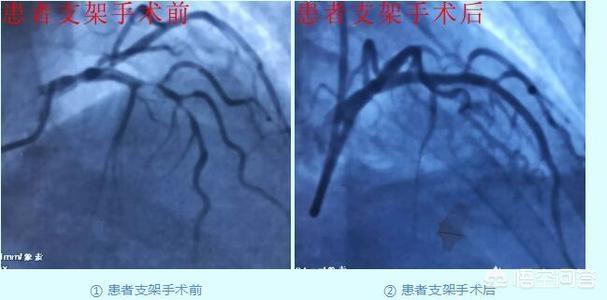
Coronary angiography is currently a relatively simple procedure, but there are still some complications.
Allergy to contrast media, which usually results in an allergy test, is relatively rare.
Puncture leads to arterial rupture, which is related to the level of the operator, the condition of the patient's blood vessels, and the patient's cooperation with the procedure. Such as the formation of hemangioma, arteriovenous fistula, neck hematoma, retroperitoneal hematoma. I have rescued a patient with respiratory obstruction after the formation of a huge hematoma in the neck. Uncommon.
Vagal reflexes, severe vagogenesis may lead to cardiac arrest. This needs to be closely monitored by the surgeon to prevent it in time.
Pericardial tamponade, if it occurs requires immediate pericardiocentesis drainage or even surgery.
Other organ infarcts. Uncommon.
Vasculitis, because an infection or other cause may cause the blood vessels to become inflamed.
Because coronary angiography is an invasive test that can be dangerous, it is not routinely used for coronary screening. If the average person needs to have their coronary arteries checked, they may consider a coronary CT.
My grandfather didn't have a coronary angiogram because he himself had symptoms of stomach bleeding and wasn't a good candidate for a coronary angiogram, theOtherwise it increases the chances of stomach bleeding. My grandfather had a coronary CT, which turned out to be a big problem and revealed that he had aortic coarctation and then severe aortic stenosis.
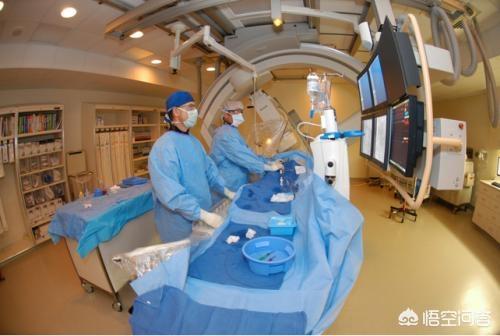
Coronary CT is good for diagnosing coronary atherosclerosis, aortitis, aortic aneurysm, and aortic coarctation. Not everyone should have a coronary CT, but rather the specialist performs other routine tests to determine if a coronary CT is needed.
Some people are worried about their health problems, out of the problem there is a fear of checking the harm, then develop a healthy life and diet habits, so that the disease away from their own.
I am Dr. Little Shadow. A cardiac coronary angiogram is the gold standard for checking the coronary arteries. For severe coronary atherosclerosis, a cardiac coronary angiogram is needed to assess the degree of stenosis and stents can always be put in for diagnostic and therapeutic purposes. Is cardiac angiography harmful? This is an invasive test, and in a few cases there are some complications, but the technology is now very mature, and the complications of imaging have been reduced a lot.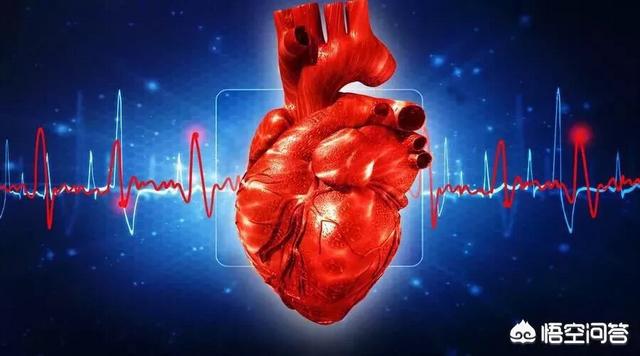
What is coronary angiography?
Coronary CTA and coronary angiography are currently available to detect coronary artery disease. Coronary CTA is widely used but can only be used as an assessment and has no therapeutic purpose.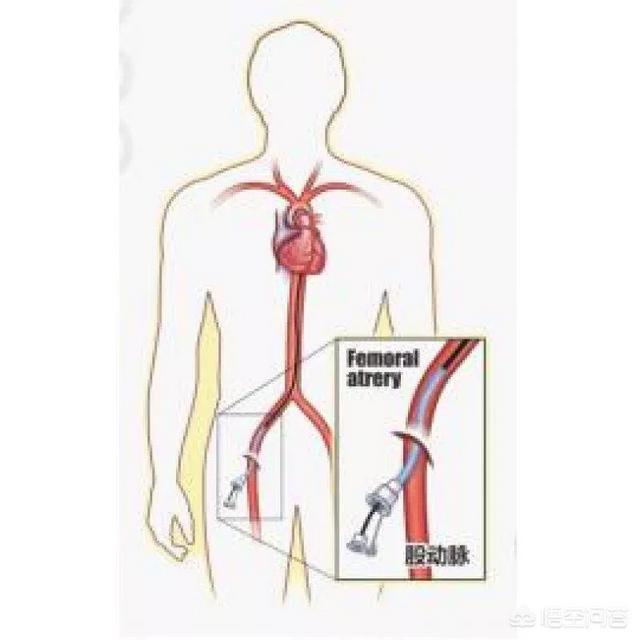
Coronary angiography is done by threading a needle right through the femoral artery location, sending a tube in, all the way up, to the location of the coronary artery, hitting the iodine contrast, showing the coronary artery, which can diagnose coronary artery congenital disease, atherosclerosis, aneurysms, arterial malformations and other diseases, most of which are atherosclerosis leading to narrowing of the lumen. The degree of stenosis can be evaluated, and in the case of severe stenosis, with myocardial infarction, a stent can be directly put in to prop open the narrowed lumen and restore blood flow for therapeutic purposes.
This test is the gold standard for checking the coronary arteries and is invasive compared to coronary CTA because it requires a catheter to be threaded through the femoral artery. In addition, this test requires both the doctor and the patient to be exposed to radiation at the same time. Interventionalists are great just because every interventional procedure requires the same exposure to radiation as the patient. It is possible for a doctor to do several interventional procedures in a day, and that's a lot of radiation.
What are the dangers of coronary angiography?
Currently this test is very sophisticated and has relatively few complications, but every test or procedure has the potential for these complications. Even though the probability of occurrence is very low, it is still important to talk about it.
1. Localized hematoma of the femoral artery
Because the catheter is threaded in from the femoral artery, all operations are performed through this small opening. After the examination, if this opening is not closed well, it is easy to ooze blood, and when there is more blood, a local hematoma is formed.
2. Catheter guidewire damage to arteries
The catheter needs to be shaped away from the body's arteries, so there is a possibility of damage to the arteries, but the probability of this is already very low.
3. Contrast allergy, contrast nephropathy
Coronary CTA and angiography require iodine contrast to be injected, and a very small number of people develop an allergy to iodine contrast, as well as damage to the kidneys from the contrast if the kidneys are not functioning well. Currently, non-ionic contrast agents are used, which also greatly reduces contrast allergy and kidney damage.
After this test, drink plenty of water to promote the elimination of the contrast agent and reduce damage to the kidneys.
The above mentioned complications of imaging are rare nowadays. There is no need for people to worry unduly. If the doctor evaluates the need for imaging, it should still be done. For severe coronary atherosclerosis, acute myocardial infarction, stenting with angiography plays an immediate role.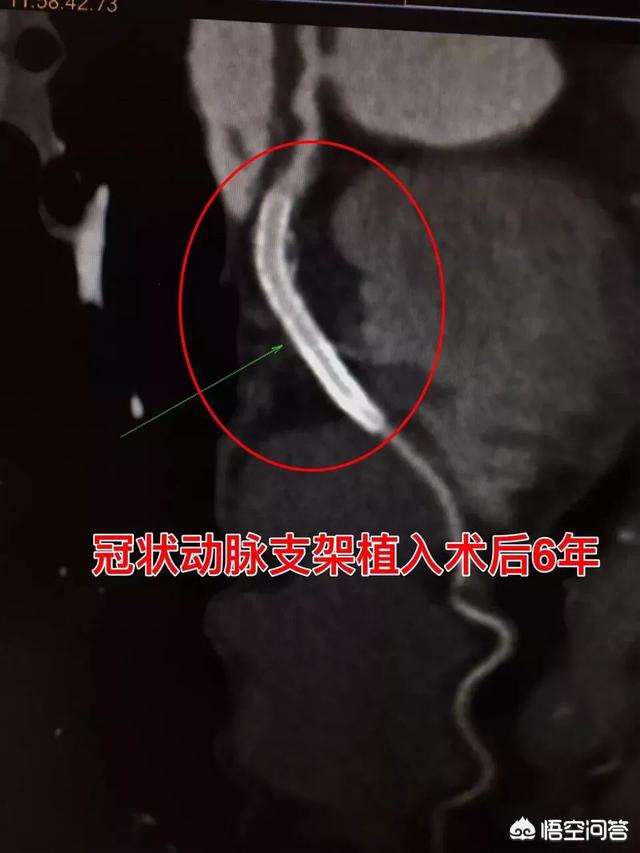
I am.Dr. Shadow. To learn more about medicine, follow me.
Cardiac imaging refers to coronary angiography, the general process is in the first examiner's radial artery or femoral artery cut a small opening, a thin catheter will be inserted from the incision, along the direction of the artery has been deep into the coronary artery, and then injected into the contrast medium, the coronary arteries to visualize the coronary arteries can be clear coronary artery disease and its branches of the narrowing of the site and degree of the coronary heart disease is the diagnosis of coronary artery disease The "gold standard". Below, we understand three issues together:
- Is cardiography harmful?
- How can I minimize the health risks of cardiac imaging?
- Who needs a cardiogram?
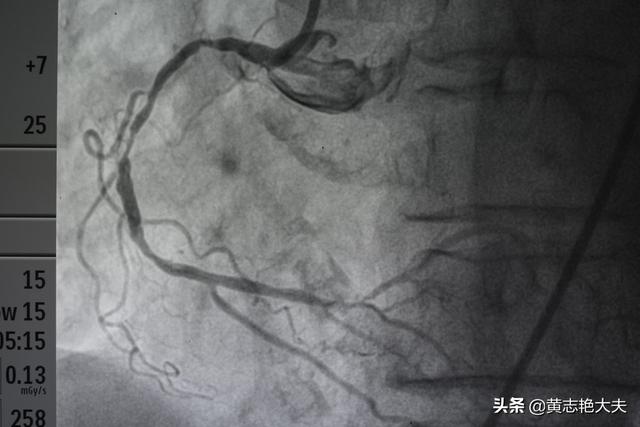
A. Is cardiography harmful to the body?
(i) Puncture injury: cardiac imaging is an invasive test, and puncture may bring some side effects, such as hematoma, blood clots, etc., and in serious cases, pseudoaneurysm may occur. Nowadays, the imaging technology is very mature and such cases are less common.
(ii) Impact of contrast medium: the commonly used contrast medium is iodine, and some people are allergic to iodine, which may cause allergic reaction after injection of contrast medium. In addition, after injecting the contrast agent into the blood vessels, it needs to be excreted through the kidneys, which will burden the kidneys in the process of excretion and may cause kidney function damage, especially for people with poor kidney function or chronic diseases such as high blood pressure and diabetes mellitus, which are more susceptible to the effects of contrast agents.
(c) Radiation: after injecting the contrast medium, it is necessary to draw results with the help of CT scanning, and there is a certain amount of radiation in CT examination. Coronary angiography, because of the need for dynamic observation of the coronary arteries, stays for a relatively long time, and the amount of radiation is also greater than that of general CT examination, and the radiation may have an impact on the cells of the body.
(d) Arrhythmia: The main risk of cardiac imaging is arrhythmia. Cardiac imaging involves the insertion of a catheter into the arteries of a person's blood vessels, and arrhythmia can occur when the procedure is not done properly.
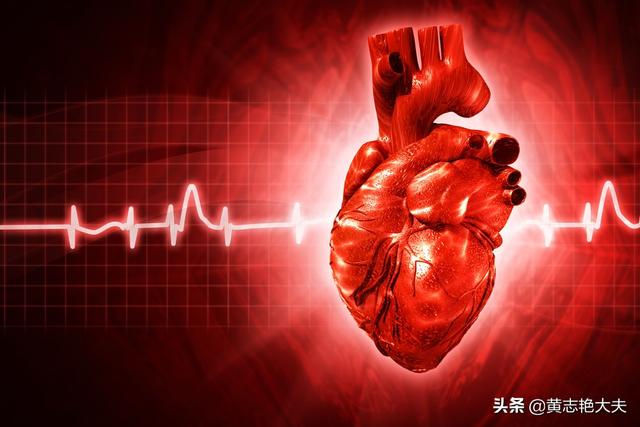
Second, how to minimize the risk of cardiac imaging to the body?
These are all theoretical possible risks. In practice, cardiography is still relatively harmless and there are ways to minimize the damage caused by cardiography.
(a) Observe the puncture site more often: After the operation, it is necessary to observe the puncture site more often, and once abnormalities are found, such as redness, swelling and pain, etc., it is necessary to consult a doctor in time to avoid serious consequences.
(ii) Drink plenty of water: Drinking plenty of water helps to promote the metabolism and excretion of contrast media.
(iii) Control the number of imaging sessions: if there are no special circumstances, do not have frequent cardiac imaging.
(d) Choosing regular hospitals: Try to choose experienced tertiary hospitals for examination.
(e) Rest: Resting as much as possible after an imaging procedure will relieve discomfort and allow for quick recovery, and it will reduce the likelihood of bleeding from the puncture procedure due to walking around.
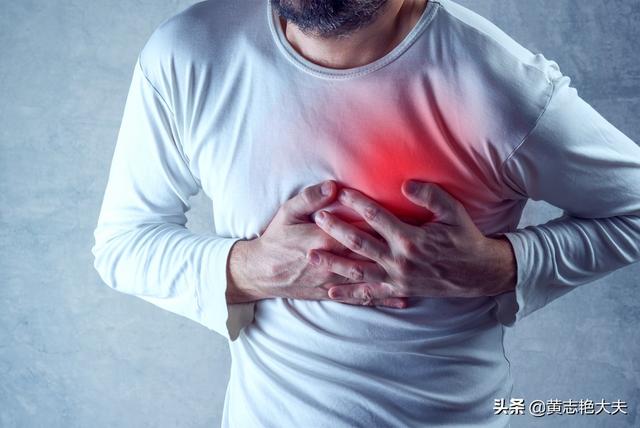
C. Who needs cardiography?
- History of coronary angina and myocardial infarction;
- Symptoms of chest tightness, chest pain, and high suspicion of coronary artery disease;
- Recurrent angina after coronary stenting or surgical bypass grafting;
- Those over 50 years of age who require major surgery;
- Unexplained ECG abnormalities need to be excluded in patients with coronary artery disease;
- There was severe stenosis of the vessel on coronary CT.
If you have any of these conditions and there are no contraindications, your doctor may recommend an imaging test. Be sure not to refuse the test because you are worried about the harm it will do to your body, and trust your professional doctor, who will make recommendations for the treatment that will be most beneficial to the patient based on the patient's physical condition.
I am Dr. Huang Zhiyan, dedicated to explaining the complexity of disease knowledge in plain words to help you manage your body. Your praise is my greatest motivation! Also, if you have family members with cardiac imaging-related concerns, please pass this article on to them!
The basic procedure of cardiography is to place a catheter through a puncture in the radial artery (at the wrist) or femoral artery (at the base of the thigh) and use a guidewire to guide the catheter retrogradely into the heart or important blood vessels around the heart (aorta, coronary arteries), where a contrast medium is injected to visualize the structure of the heart chambers or important blood vessels around the heart under the effect of X-rays.
So, based on the process described above, the possible hazards or risks to the body from cardiography include:
1. hematoma formation at the radial or femoral artery puncture site;
2. The risk of damage to the inner walls of the blood vessels and heart chambers that may arise from the mechanical movement of the guidewire or catheter in the arterial vasculature and in the structures of the heart, or the risk of abnormalities in the electrical conduction system of the heart caused by the mechanical stimulation of the catheter in the heart and in the structures within the heart (which may sometimes trigger arrhythmias or even ventricular fibrillation);
3. The contrast agent is usually iodine-containing contrast agent, iodine-containing contrast agent may cause an allergic reaction in some patients, and in serious cases, it may cause life-threatening laryngeal edema; at the same time, the iodine-containing contrast agent may also cause transient renal function abnormality, which often manifests itself in fluctuation of serum creatinine level, and in serious cases, it may lead to decrease of the glomerular filtration rate of the patients;
4. The patient is exposed to X-rays throughout the entire imaging procedure, and therefore, the patient is also exposed to the associated radiation from the X-rays.
Of course, the incidence of hematoma formation at the puncture site, injury and arrhythmia due to mechanical movement of the catheter guidewire, and adverse effects related to the contrast medium mentioned above are clinically low, and cardiac imaging should still be actively pursued in patients with clinical symptoms that are highly suspicious of cardiac disease, as the benefits will far outweigh the potential risks assumed!
When it comes to coronary angiography, it should be said that many people are now familiar with it. Since many relatives and friends around us have had this test, we have basically seen this test program before. So, what are the hazards or side effects of coronary angiography? Today, Dr. Zhang will talk about this question, hoping to help friends in front of the phone.
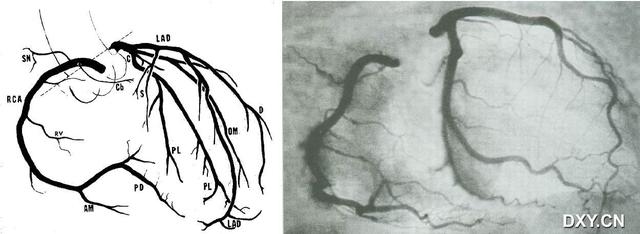
When it comes to the possible adverse effects of coronary angiography, I'll probably summarize them for you in the following 4 points:
1. Traumatized
Coronary angiography is an invasive test and is not defined as noninvasive like those tests of coronary CTA. This trauma is centered on the arterial puncture with a finger guide wire and contrast catheter into the body, which is technically less traumatic and can be considered minimally invasive, but cannot be said to be noninvasive. And many people still need to be protected at the puncture vessel for a week after the procedure to avoid excessive force so that the puncture doesn't tear and bleed again.

2. There is radiation
First of all, I would like to tell you that the radiation level of a coronary angiogram is tolerated by the human body, and you can rest assured of this. In fact, we can think about it the other way round. If the radiation level of coronary angiography is very high, then wouldn't so many people who have had coronary angiography over the years have developed problems. However, in reality, very few people have problems because of coronary angiography. Also, interventional cardiologists do a large number of coronary angiograms almost every day, so if coronary angiograms had a high level of radiation, wouldn't these doctors also have problems sooner rather than later. However, in the real world, these situations rarely occur, which also indicates that the radiation level of coronary angiography is acceptable to the human body. This is not something we should worry about.
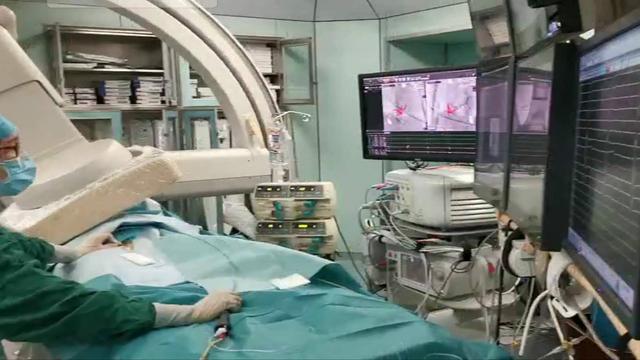
3. Deterioration of renal function
Coronary angiography to use to the contrast agent, and these contrast agents need the human body through the kidneys out of the body, which invariably increases the burden on the kidneys. In reality, after many people have coronary angiography surgery, there will also be a transient deterioration of renal function, which usually requires patients to drink more water, or hydration therapy, so that their contrast agent can be discharged as soon as possible, so that renal function can be improved. For many patients with very poor renal function, sometimes after coronary angiography, it is also necessary to do renal dialysis in a timely manner, also in order to discharge the contrast agent in the body as soon as possible.
4. Allergy
Coronary angiograms use a contrast agent that, in many cases, contains iodine. In this case, some people who are allergic to iodine may have an allergic reaction to it. Generally speaking, once the allergy is detected during the coronary angiography procedure, positive treatment will be given to the patient, and honestly speaking, the chance of this kind of allergy is relatively not high, so we should not worry too much. If you are really unsure, you can do an iodine allergy test before the procedure.
These are a few of the adverse reactions that may be encountered in coronary angiography, in fact, we should never see these adverse reactions and absolutely refuse coronary angiography, because many people do need to do this procedure, and this procedure is done to check for lesions and then deal with serious lesions. You should never avoid treatment because of the small probability of adverse events that may occur. We also hope that Dr. Zhang's introduction today can help you and enable you to face coronary angiography correctly.
More knowledge related to coronary heart disease, you can click on the following link to get, this is Dr. Zhang personally do the coronary heart disease course: Dr. Zhang do the coronary heart disease course

Cardiac imaging is a common cardiovascular test for the diagnosis and treatment of coronary artery disease.
We need to be objective in evaluating coronary angiography; after all, cardiac angiography is an invasive test, and invasive tests are risky. However, cardiography is a very sophisticated technique and is rarely dangerous.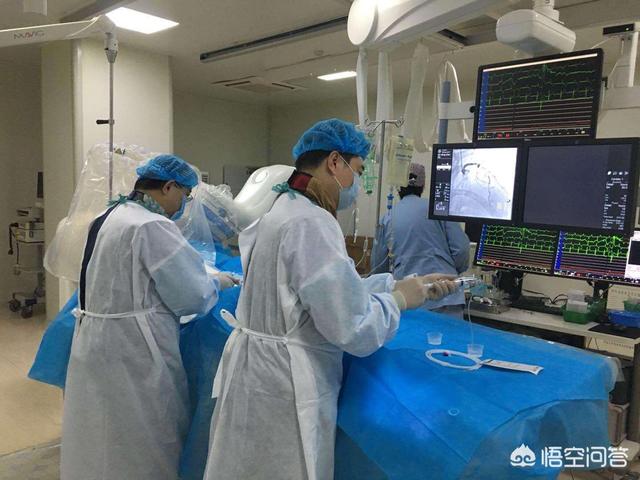
Let's give you a theoretical overview of what a cardiogram might do to your body:.
1. Hemorrhage or hematoma.
Invasive examination, that is, to enter the body, cardiography has to put a tube through the puncture site, through which the official connects the outside world with the blood vessels, which may cause local bleeding, systemic bleeding, hematoma at the puncture site, vasospasm, damage to the inner wall of the blood vessels, pseudoaneurysm and arteriovenous fistulae, etc., and arterial occlusion and so on.
2. Contrast nephropathy.
Since it is a cardiac imaging, it is necessary to use contrast medium, which needs to be metabolized by the kidneys, especially diabetes mellitus, renal insufficiency, and the elderly are more prone to develop contrast nephropathy.
3. Very few risks.
Complications such as guidewire breakage, catheter breakage, catheter guidewire kinking, etc., angina attacks, acute myocardial infarction, acute vasospasm, coronary artery entrapment, coronary artery perforation, various arrhythmias, various embolisms.
After you hear this, you are probably afraid to have a cardiogram, but it's not that scary, it's just a theory, the actual incidence is very, very low.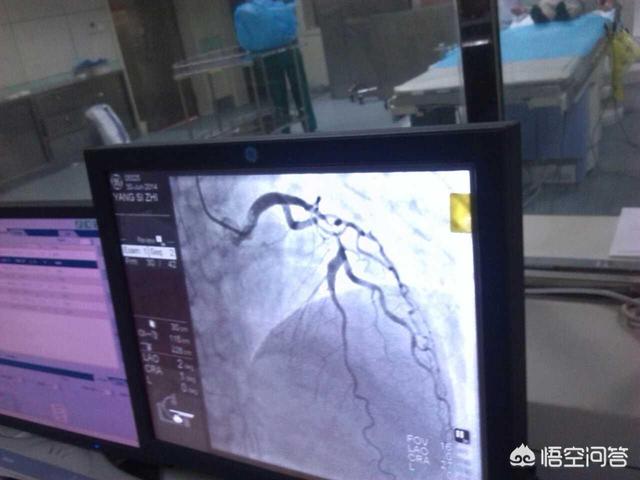
We must grasp the indications for cardiac imaging, should be done before doing, and not as an imaging doctor, touch the patient let do imaging, which is different from the machine. People who shouldn't have cardiac imaging can only increase the risk of injury; people who must have cardiac imaging, even if there is a risk, it is worthwhile to have cardiac imaging, because cardiac imaging can help us solve the problem.
(Dr. Cardiovascular Wang officially authorized original protection, such as theft must be held legally responsible.)
First, what is cardiography all about?
Cardiography, also known as coronary angiography, is one of the most common tests performed by cardiologists and is the gold standard for confirming the diagnosis of coronary artery disease! What is a cardiogram? Cardiography uses an arterial approach, including the radial, femoral, and arterial arteries. The arterial approach is used to deliver a catheter to the opening of the coronary artery, from which a contrast medium is injected and the coronary artery is visualized on x-ray.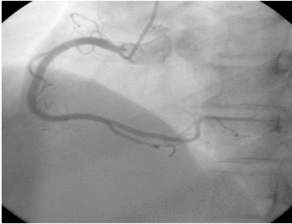
Second, is cardiography harmful to the body?
As an invasive test, cardiography definitely has its hazards or side effects, but not every cardiography has complications or is harmful to the body. The common cardiac imaging hazards are mainly the following, first, puncture or arterial access related complications. Second, coronary artery related complications. Third, cardiac function and other related complications. Fourth, contrast nephropathy and other disease complications. Although there are so many complications in cardiac imaging, the probability of their occurrence is extremely low, and with the gradual popularization of cardiac imaging technology, the rate of their occurrence is even lower and lower. Therefore, under the premise of thorough consideration, there is no need to worry about its related complications and harm to the body.
Third, who needs cardiography?
Since cardiography is so popular, who needs it? Firstly, patients who need to identify whether they have coronary artery disease; secondly, patients who need to clarify the severity of coronary artery disease, as well as guidance on the next step of treatment; thirdly, patients who need to assess the condition of the coronary arteries for other treatments in order to decide whether such treatments will have an impact on the heart or whether they need to be treated at the same time; and fourthly, patients who need to have medical checkups for certain professions, for example, pilots, and so on. Strictly grasping the indications for cardiac imaging is an important step in avoiding complications related to cardiac imaging; not doing it for those who don't need it, and doing it for those who do need it will minimize complications.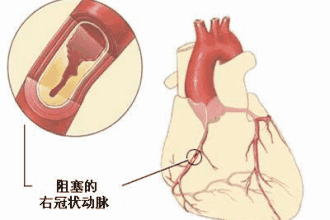
See what's going on? Follow us to get daily updates on science tweeted to you.
Hello, everyone! I'm Blessed Dad, a practicing physician. I hope my answer is useful to you.
Cardiac angiography should refer to coronary angiography. Coronary angiography is the most objective and accurate method to diagnose coronary heart disease, and it has been in clinical use for more than twenty years. With the advancement of technology, coronary angiography is now a very safe test.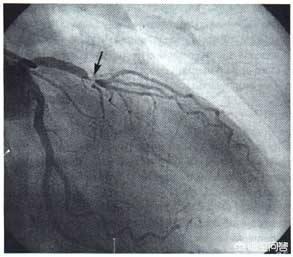
Despite the low chance of adverse outcomes, coronary angiography carries risks, which is why a special test consent form is signed prior to the test and the examining physician informs of the risks. These risks are twofold.
Risks inherent in vascular interventions
Coronary angiography requires a puncture in a peripheral artery, placement of a catheter, and reaching the opening of the coronary artery via the aorta. Therefore, coronary angiography is an invasive test that may cause complications such as bleeding at the puncture point, arteriovenous fistula, arterial mucosal injury, coronary artery spasm, atheromatous plaque dislodgement, acute infarction, and coronary artery entrapment.
Risks associated with contrast media
Contrast media can cause allergy, the more serious is acute anaphylaxis. The excretion of contrast media through the kidneys has a certain impact on renal function, especially in patients with renal insufficiency, and there is a possibility of contrast nephropathy.
Overall, coronary angiography is quite safe. My hospital has thousands of coronary angiograms per year, with no more than a few complications, and no serious complications in the last two years. So don't let the preoperative signature scare you.
I'm FooDad, a practicing physician, so if you think I'm making sense, just give me a like 😜 Follow me for practical and fun nutrition and health information.
Hello, I'm happy to answer this question for you.
Understanding the dangers of cardiography starts with knowing what it is. A cardiogram is a catheter that is inserted into the radial or femoral artery, a contrast agent is injected, and with the help of the catheter extended to the coronary arteries, the coronary arteries have been tested for blockage or to see the extent of the blockage.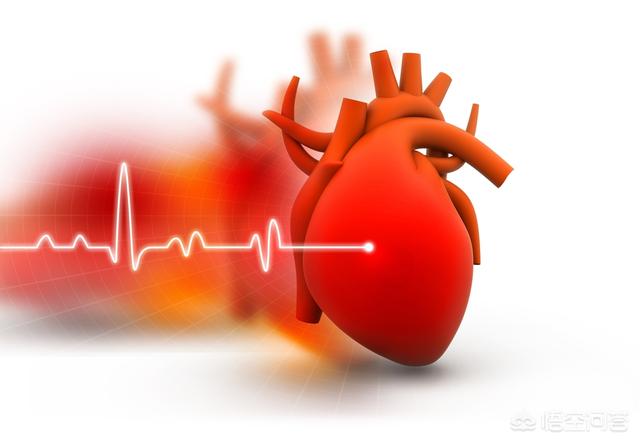
We must be clear that this is an invasive procedure that carries certain risks.
Take my grandma's experience as an example, my grandma has been suffering from coronary heart disease for more than ten years. Recently, she suffered from frequent angina pectoris and was urgently sent to the Municipal People's Hospital, where the doctor suggested that my grandma should have a cardiac angiogram, but on the one hand my grandma had a bad heart, and on the other hand she was very timid and afraid of having an operation, and she said she would not have an operation; as a result, in the afternoon of the day after the doctor's suggestion, because of fear of having an operation, her blood pressure rose to 180, which scared my mom, my aunt and my uncle were so scared that they hurriedly promised not to do the cardiography. In this case, having the surgery can do more harm than good. In itself, my grandmother's illness can still be effectively controlled by medication, but once the surgery is done, because of the fear, dread, and bad mood, the damage to the human body is very huge. After my grandma was discharged from the hospital, she lost 7 pounds in just one week of hospitalization, and she said she was scared by the surgery.
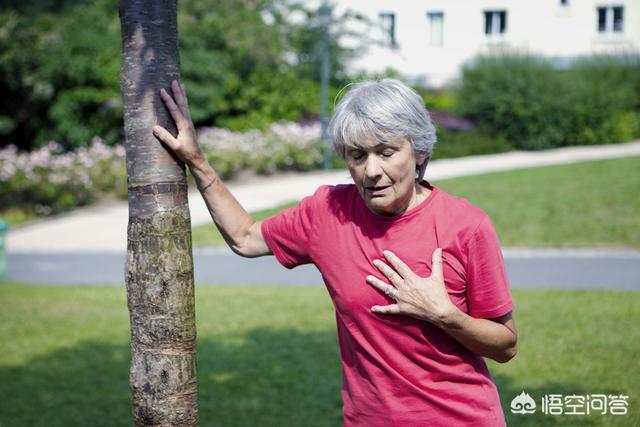
However, there are different cases of contrast surgery. In case of acute myocardial infarction or other conditions, cardiac imaging must be done to see if cardiac bypass surgery is needed. After all, life only comes once, and in the face of life, it is most important to have surgery to sustain life.
I hope this inspires you in some way, and I wish you a speedy recovery.
This question and answer are from the site users, does not represent the position of the site, such as infringement, please contact the administrator to delete.